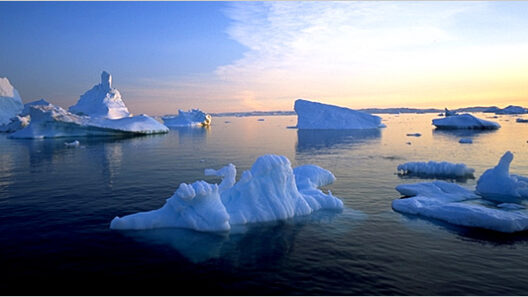Climate change stands as one of the most pressing issues of our time, manifesting through various alarming phenomena. Among them, rising sea levels and ocean pollution are critically intertwined challenges that significantly threaten marine ecosystems and human livelihoods. As glaciers and polar ice caps succumb to unprecedented melting, the consequences ripple across global coastlines, intensifying the urgency of addressing ocean health.
The phenomenon of rising waters is primarily attributed to two factors: the thermal expansion of seawater as it warms and the increased influx of freshwater from melting ice sheets. The statistics are sobering. Sea levels have risen more than eight inches since the late 19th century, and predictions indicate further increases by the end of this century, possibly exceeding two feet. Such elevations pose disastrous implications for coastal communities and ecosystems alike, leading to habitat destruction, increased salinity in estuarine environments, and the displacement of millions.
Coastal ecosystems, such as mangroves, salt marshes, and coral reefs, serve as crucial buffers against rising tides and extreme weather events. However, these ecosystems are vulnerable. As waters rise, the delicate balance of these habitats can be disrupted. For instance, the inundation of mangroves not only endangers their survival but also diminishes their ability to protect shorelines, contributing to erosion and loss of biodiversity. The plight of corals is particularly dire; warmer waters lead to phenomena such as coral bleaching, where corals expel the algae that sustain them, ultimately resulting in widespread reef degradation.
In tandem with rising waters, ocean health is increasingly compromised by pollution. Over the past few decades, oceans have borne the brunt of human activity, accumulating unprecedented levels of contaminants. Plastic waste has emerged as a particularly insidious problem, with estimates suggesting that approximately 8 million tons enter the ocean annually. This pervasive pollution not only clogs waterways and beaches but also alters marine food webs, with microplastics infiltrating every level of the trophic pyramid.
The impact of pollution also reverberates through chemical contaminants such as heavy metals, pesticides, and fertilizers that wash into the sea, degrading water quality and endangering marine life. Eutrophication, the process driven by nutrient overloads from agricultural runoff, leads to harmful algal blooms. These blooms produce toxins detrimental to both marine organisms and human health, resulting in fish kills and contaminated seafood supply. The ripple effect of these blooms demonstrates the interconnectedness of land and sea, revealing how terrestrial practices have profound implications for oceanic ecosystems.
An additional concern is ocean acidification, a direct consequence of increased atmospheric carbon dioxide levels. When CO2 is absorbed by seawater, it undergoes chemical transformations that lower pH levels, creating a more acidic environment. This shift is particularly harmful to calcifying organisms, such as mollusks and certain plankton, which rely on calcium carbonate to build their shells and skeletons. As ocean chemistry continues to change, the repercussions on marine biodiversity and food security become worrisome.
The socio-economic ramifications are profound. Coastal populations, often reliant on fisheries and tourism, face existential threats as their resources dwindle and habitats erode. Estimates suggest that by 2050, as many as 1 billion people could be displaced by the combination of rising sea levels and intensified storms. The economic losses involved could reach trillions of dollars, making ocean health a matter not just of environmental stewardship but of economic survival.
However, there is still hope. Effective management and conservation strategies can mitigate some adverse effects. Marine Protected Areas (MPAs) offer refuge for marine life and aid in the restoration of biodiversity. Scientific research plays a pivotal role in understanding ocean dynamics, informing policy decisions, and fostering sustainable development practices. Innovations in clean-up technologies for ocean plastics and advancements in biodegradable materials present pathways towards reducing marine pollution.
Public awareness and grassroots movements are crucial in this societal shift. Education around sustainable practices can empower individuals to make changes that collectively enhance ocean health. Advocacy for policy reform is essential as well; governments must impose stricter regulations on plastic production and encourage sustainable agricultural practices to minimize runoff. The incorporation of climate resilience into urban planning can safeguard vulnerable coastal areas from both rising waters and pollution.
In conclusion, the convergence of rising waters and ocean pollution epitomizes the broader ramifications of climate change. While the challenges are daunting, understanding their complexities is imperative for fostering effective responses. Only through concerted efforts—spanning policy, community action, and scientific inquiry—can society hope to protect the oceans that are vital for all life on Earth. As stewards of this blue planet, the obligation to safeguard ocean health transcends generations and borders, marking conservation as an ethical imperative in the face of climate change.








